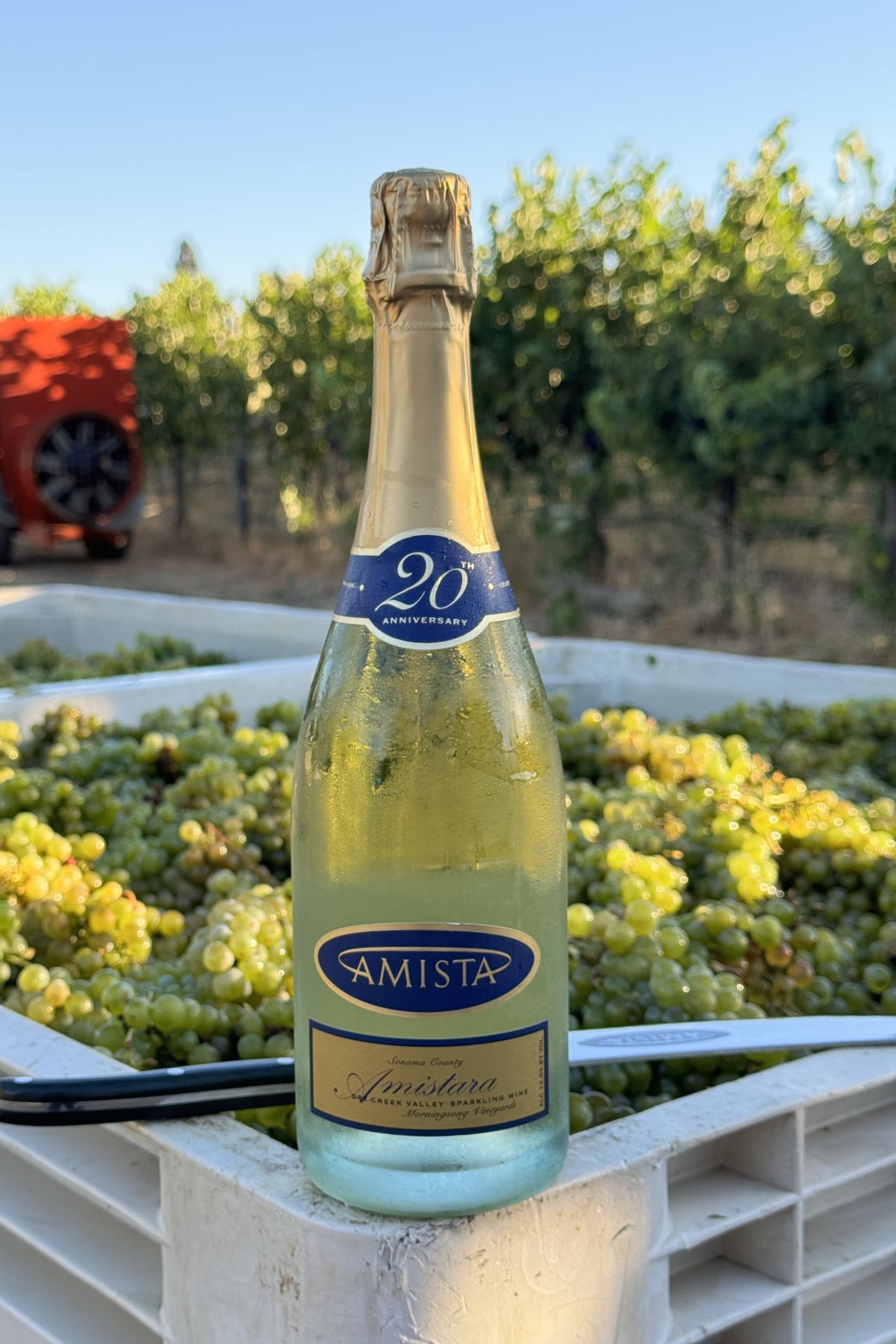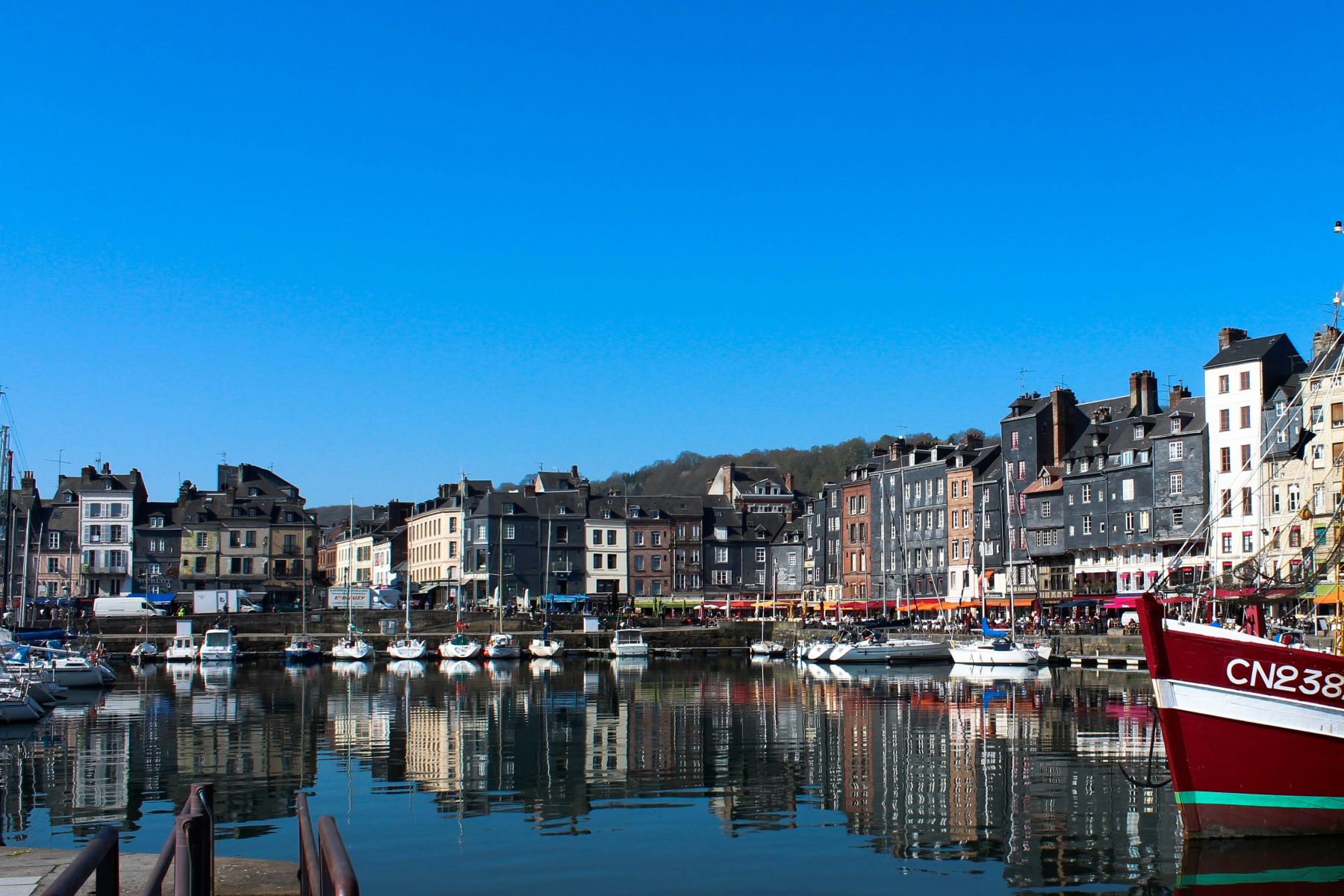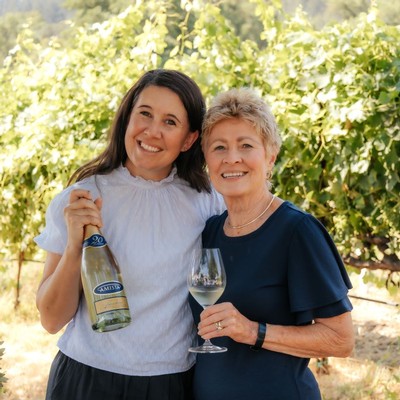Sparkling Moments in Wine
I have been asked lots of questions about owning a winery after spending so many years in the corporate world. Here are some of the stories of my journey into wine that have added sparkling moments to my life.
Rooted in Rhône: How Rhône Varietals Became the Heart of Amista Vineyards
Celebrating Rhône Varietals in Sonoma County’s Dry Creek Valley…
…organically grown reds, rosés, blends and sparkling wines.
At Amista Vineyards in Healdsburg, Rhône varietals aren’t just part of our portfolio—they’re the soul of our story.
When we planted our first Syrah vines in 2000 in our estate Morningsong Vineyards, nestled in the Dry Creek Valley, we didn’t have a master plan. We simply followed our instincts—and a little bit of buzz that Syrah was poised to be “the next big thing.” That buzz faded, but our passion for Rhône-style wines only deepened.
Our first Syrah harvest in 2002 led to what we affectionately called Garage Syrah—a wine crafted in our garage with the help of friends and family. It wasn’t meant for the market, but its enthusiastic reception gave us the encouragement to launch Amista Vineyards in Healdsburg in 2004. Syrah became the foundation of our winemaking journey, one that would soon expand into a full embrace of Rhône varietals.
Exploring Rhône Wines Grown and Made in Healdsburg, Sonoma County
Inspired by our love for Syrah and guided by curiosity, we added Grenache and Mourvèdre to our estate vineyards in 2011 using a grafting technique called T-budding. It was a bold move, allowing us to grow new varietals without waiting years for new vines to mature. The result? Our first Rhône blend—Tres, a classic GSM (Grenache, Syrah, Mourvèdre)—was born in 2012.
Tres quickly became a fan favorite and a personal favorite of my late husband and co-founder, Mike. Blending was new to us, but with the vision of winemaker Ashley Herzberg, we discovered the beauty of Rhône-style blends—wines that are expressive, food-friendly, and endlessly intriguing.
Today, our estate-grown Rhône collection includes:
- Syrah – Smooth and approachable with brambly berries, dusty earth and dark chocolate
- Grenache – Vibrant and elegant with spice, orange peel and bright red berry notes
- Mourvèdre – Bright red cherry and orange zest
- Tres – Our signature Rhône blend that brings all three grapes together in harmony
- Rosé de Tres – A crisp, dry rosé from Grenache, Syrah, and Mourvèdre
The Sparkling Rhône Revolution at Amista
Our love for Rhône wines didn’t stop at still wines. In 2008, we ventured into sparkling with our first Sparkling Syrah, a bold, cranberry-hued rosé that shimmered with joy and broke the mold of traditional sparkling wine expectations.
Winemaker Ashley was skeptical at first—until she tasted it. Since then, we’ve expanded our sparkling program to include five Rhône-inspired sparkling wines, all made using the traditional method, right here in Healdsburg:
- Sparkling Syrah – The original cult favorite, bright and festive
- Sparkling Grenache – Delicate, fresh, and always in high demand
- Sparkling Mataró – Made from 100% Mourvèdre, rich and savory
- Sparkling Tres – A bubbly take on our GSM blend
- Fusión – A unique blend of Chardonnay, Syrah, and Grenache
These wines are more than sparkling—they’re expressions of creativity and celebration. Rhône-style sparkling wines pair beautifully with a wide range of foods, from spicy Thai to savory duck, and are just as at home on a holiday table as at a casual gathering with friends.
Why Rhône Varietals in Sonoma County?
So, why Rhône? Because they speak to us. Because they thrive in the warm days and cool nights of Sonoma County’s Dry Creek Valley. Because they make wines that are vibrant, expressive, and food-friendly. And most of all, because they continue to surprise and inspire us, year after year.
We didn’t set out to become champions of Rhône-style wines, but they’ve become a defining part of who we are at Amista Vineyards. From our still wines to our sparkling lineup, Rhône varietals allow us to share our story—and our passion—with every bottle.
Come taste the Rhône side of Dry Creek Valley. Explore our estate-grown Rhône wines and discover the Amista promise: distinctive wines and exceptional experiences - making your everyday moments special and your special moments extraordinary.
Still Thirsty?
Learn more about Rhone style wines at Amista and beyond:
Why Rhônes at Amista Vineyards?
What Do We Mean When We Say Rhône-style Wine?
What is a Sparkling GSM Blend?
Sparkling Syrah: A Journey Begins at Amista
From Struggling Vines to Certified Organic: Our Journey at Amista Vineyards
How We Almost Destroyed Our Vineyards...
…and brought them and our wines back to life with organic farming.
At Amista, "making friends" is more than our name, it's a way of life. We extend that friendship to the earth through our deep commitment to sustainable winegrowing. During Earth Month this May, our winemaker Ashley Herzberg and I invite you to celebrate with us and learn more about our continuing journey toward a healthier, more sustainable vineyard in the heart of Dry Creek Valley.
Reclaiming Our Land: A Turning Point in Vineyard Stewardship
When Ashley joined Amista in 2011, she inherited vineyards that were struggling. At the time, Mike and I had leased our estate Morningsong Vineyards to a vineyard management company. It seemed like a smart decision—we avoided farming costs and received a portion of the profits when the grapes were sold.
But we soon realized we had made a mistake.
The lessee prioritized yield and profit, farming with minimal investment and pushing the vines to produce as many tons of fruit as possible. This practice led to a slow but steady decline in the health of our soil, our vineyards—and ultimately, the quality of our wines.
Ashley helped us see that if we wanted to grow better grapes and make wines that reflect the beauty of our land, we needed to make a change. Although it took several years to negotiate the end of the lease, we finally took back control of our estate in 2015.
Healing the Vines: A New Era of Vineyard Management
Once we were back in charge, parts of the vineyard were in such poor condition that we feared we’d have to replant entire blocks. But after just one year of thoughtful farming under Ashley’s leadership, we began to see signs of recovery. The vines looked healthier. The soil was richer. And the winemaking process improved.
One early change Ashley noticed was in our Chardonnay. For the first time in years, the wine moved easily through malolactic fermentation, the natural process that transforms tart malic acid into softer lactic acid. In the past, this had been a struggle.
The culprit? Sprays used in conventional farming had likely disrupted the natural balance of the vineyard, interfering with fermentation.
Native Yeasts, Natural Flavors, and Healthier Soil
As the vineyard came back to life, Ashley began experimenting with native yeast fermentation—a process that depends on the healthy microbial life present in the vineyard. The results were exciting.
“You get more nuance, more layers of flavor,” she explained. “Commercial yeast gives one consistent character. But native fermentation can involve up to a thousand different yeast strains by the end. That adds complexity and a true sense of place.”
Thanks to healthier soil and vines, she no longer needed to add nitrogen supplements during fermentation. “Now, the vineyard provides what the wine needs naturally,” she said.
Drought Resilience and Regenerative Practices
Our shift to sustainable vineyard practices came just in time. As drought years became more frequent, we realized that healthy vines were far better equipped to survive—and even thrive—under stress.
One big change was stopping the practice of discing every row to remove weeds. Instead, we began planting cover crops to retain moisture, enrich the soil, and foster biodiversity. These practices helped our vineyards become more resilient, holding onto precious water and nutrients through increasingly dry seasons.
From Recovery to Certification: Becoming an Organic Vineyard
Restoring an unhealthy vineyard is like nursing a patient back from a long illness—it takes time, care, and patience. First, we stopped the decline. Then we focused on building long-term health.
That commitment paid off in August 2024, when our Morningsong Vineyards received organic certification from CCOF (California Certified Organic Farmers). It was a moment of immense pride. We toasted the harvest of our first certified organic grapes with a bottle of Amistara, a special sparkling Blanc de Blanc, created to mark Amista’s 20th anniversary.
The Surprising Mindset Shift of Organic Winegrowing
When I asked Ashley what she’s learned that might surprise people, she talked about the change in thinking required to farm organically.
“For most of my career, I was taught to see weeds as competition—something that steals water from the vines. But now, I see a dead vineyard and think that soil is bare, lifeless, losing moisture, compacted, and starved of nutrients.”
That shift in mindset, she says, was just as important as the farming practices themselves.
Celebrate Earth Month with Amista
We’re proud of the transformation of Morningsong Vineyards—from overworked and ailing to vibrant, organic, and thriving. As we celebrate Earth Month, we invite you to visit Amista Vineyards, taste the wines grown from our revitalized soil, and see for yourself what sustainable winegrowing looks like in action.
Together, we will raise a glass to a healthier planet and a more hopeful future.
Paris to Normandy with Amista and Our Dry Creek Valley Neighbors
A Wine Cruise Like No Other…
…connection, community and unforgettable moments.
I couldn’t be more excited about our upcoming wine cruise from Paris to Normandy in 2026. The thought of experiencing the romance of Paris, the breathtaking countryside along the Seine, and the rich history and art of Normandy is thrilling. But after co-hosting our first Danube wine cruise in 2017, I discovered that a river cruise is so much more than the destinations.
What Makes a River Cruise Special
A river cruise offers the perfect blend of exploration and ease. Here’s what I discovered:
- Unpack once, explore endlessly – Visit charming cities, quaint villages, and scenic countryside without the hassle of repacking every day.
- Curated experiences – Choose from several options for expert-led excursions that highlight the region’s natural beauty, culinary specialties, and fascinating history.
- No planning required – Everything is taken care of, from excursions to dining, so you can fully relax and enjoy.
- Exceptional food & wine – Savor delicious meals prepared by an onboard chef, perfectly paired with the amazing wines of Dry Creek Valley.
What Makes a Wine Cruise Extraordinary
But what truly sets a cruise apart is the people. The friendships formed and the connections deepened while sharing the adventure make it an experience you’ll cherish forever. Being surrounded by fellow wine lovers, who share a love of Dry Creek Valley creates a bond that transforms a simple trip into a once-in-a-lifetime journey. Whether it’s engaging conversations over dinner, laughter-filled excursions, or simply enjoying a glass of wine together on deck, it’s the shared moments that make a voyage unforgettable.
It’s a Shared Experience
Imagine boarding the ship with fellow wine lovers who have traveled Dry Creek Valley’s one road, stopped at its two stop signs and gazed across the acres of vines to the tree-studded hills beyond. They’ve likely crossed its historic Lambert Bridge, and sipped wines from its boutique wineries—just like you. We may arrive as strangers, but we’ll already have so much in common.
Dr. Liz Thach, MW, described Dry Creek Valley in Forbes:
"Another strong appeal of Dry Creek is that it is only 16 miles long, 2 miles wide and has no stoplights. Driving through the valley is spectacular anytime of the year, with the vineyards spread out in a verdant green tapestry in the summer; covered with gold and red leaves in autumn; and filled with old vines that look like sculptures in the winter. Springtime fills the vineyard rows with yellow mustard and orange California poppies."
There’s something incredibly special about being thousands of miles from home yet surrounded by people who share a deep appreciation for Dry Creek Valley.
It’s Personal
One of the greatest joys of our Danube cruise was the opportunity for genuine, unhurried conversations. Guests told me how much they appreciated having time to connect over meals, excursions, and informal gatherings. They especially loved the rare chance to chat casually with vintners and winemakers, learning firsthand about the wines they were enjoying at dinner.
I felt the same way. It was wonderful to move beyond the quick conversations of a tasting room visit or a wine event and truly get to know the people who love our wines. The first evening, I found a group of long-time Amista wine club members from Pittsburgh gathering in a cozy dining room. Over the week, we bonded over shared experiences, great wines, and lively conversations.
It’s Community
The shared interests and time for personal connection emerged into a strong sense of community, creating lasting bonds between club members from different wineries, vintners, and winemakers.
And those connections extended beyond our guests. One of the unexpected joys of co-hosting was spending time with my Dry Creek Valley neighbors. Though we work just minutes apart and see each other at events, we rarely get to sit down and truly connect.
One of my fond memories was watching two of my fellow winery owners hit the dance floor in the lounge every night—who knew they had such great moves? Moments like these create a sense of camaraderie that lasts long after the cruise ends.
Looking Ahead: Paris to Normandy 2026
As we prepare for our Paris to Normandy wine cruise, our sense of community is already growing. Ashley and I met with our winery partners recently at Amista, gathering on the patio with bubbles and snacks, brainstorming ideas for wine dinners and master classes. We are already enjoying the chance to collaborate to ensure the 2026 cruise will be an extraordinary experience for everyone on board.
Check out a quick video message from Ashley and me
Join us for a once-in-a-lifetime journey, where you’ll experience the beauty of France, the elegance of Dry Creek Valley wines, and the magic of shared adventures. We can’t wait to create unforgettable memories with you!
Ready to Set Sail?
Interested in joining us on this exclusive wine cruise from Paris to Normandy? Be sure to reserve your spot early!
Get the details: Wine Cruise – Paris to Normandy, June 2026




